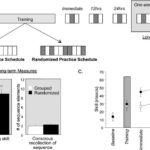Learning VBA (Visual Basic for Applications) in Excel can significantly boost your productivity and open up a world of automation possibilities. But how long does it actually take to learn? The answer, as with most skills, depends on your prior experience and learning goals.
For individuals with previous programming experience in languages like C++ or Java, grasping the fundamentals of VBA in Excel can take as little as a week. VBA is relatively simpler compared to these languages, lacking features like complex memory management, polymorphism, and operator overloading. This simplicity makes it easier to learn the basics quickly.
However, mastering VBA and becoming proficient in developing complex applications requires a deeper understanding. This level of expertise typically involves consistent practice and real-world application over a longer period, often a year or two of daily use. This extended timeframe allows for encountering diverse challenges, developing problem-solving skills, and refining coding techniques. You’ll transition from questioning the possibility of a task to exploring the most efficient implementation.
Building a personal “toolbox” of reusable VBA code snippets and macros is a highly effective learning strategy. This approach encourages creating generic solutions for common Excel tasks, fostering a deeper understanding of VBA’s capabilities and promoting efficient code reuse. As your experience grows, you’ll continuously refine your toolbox, optimizing existing tools and adapting them to new challenges. You’ll also discover instances where built-in Excel functionalities eliminate the need for custom VBA solutions.
While recording and editing macros is a good starting point, don’t limit yourself to this method. Delve into programming principles and strive to apply them in your VBA projects. Understanding core concepts like loops, conditional statements, and data structures is crucial for developing robust and efficient VBA applications.
It’s also essential to recognize when VBA might not be the optimal solution. Avoid reinventing the wheel if Excel already provides the desired functionality. However, recreating built-in Excel features, such as text-to-columns or mail merge, can be a valuable learning exercise. This practice reinforces understanding of VBA’s capabilities and how it interacts with Excel’s core features.
In conclusion, the time required to learn VBA varies based on your goals and background. A basic understanding can be achieved quickly, but mastery demands consistent practice and real-world application. Embrace continuous learning, refine your coding skills, and strategically leverage VBA to unlock Excel’s full potential.

